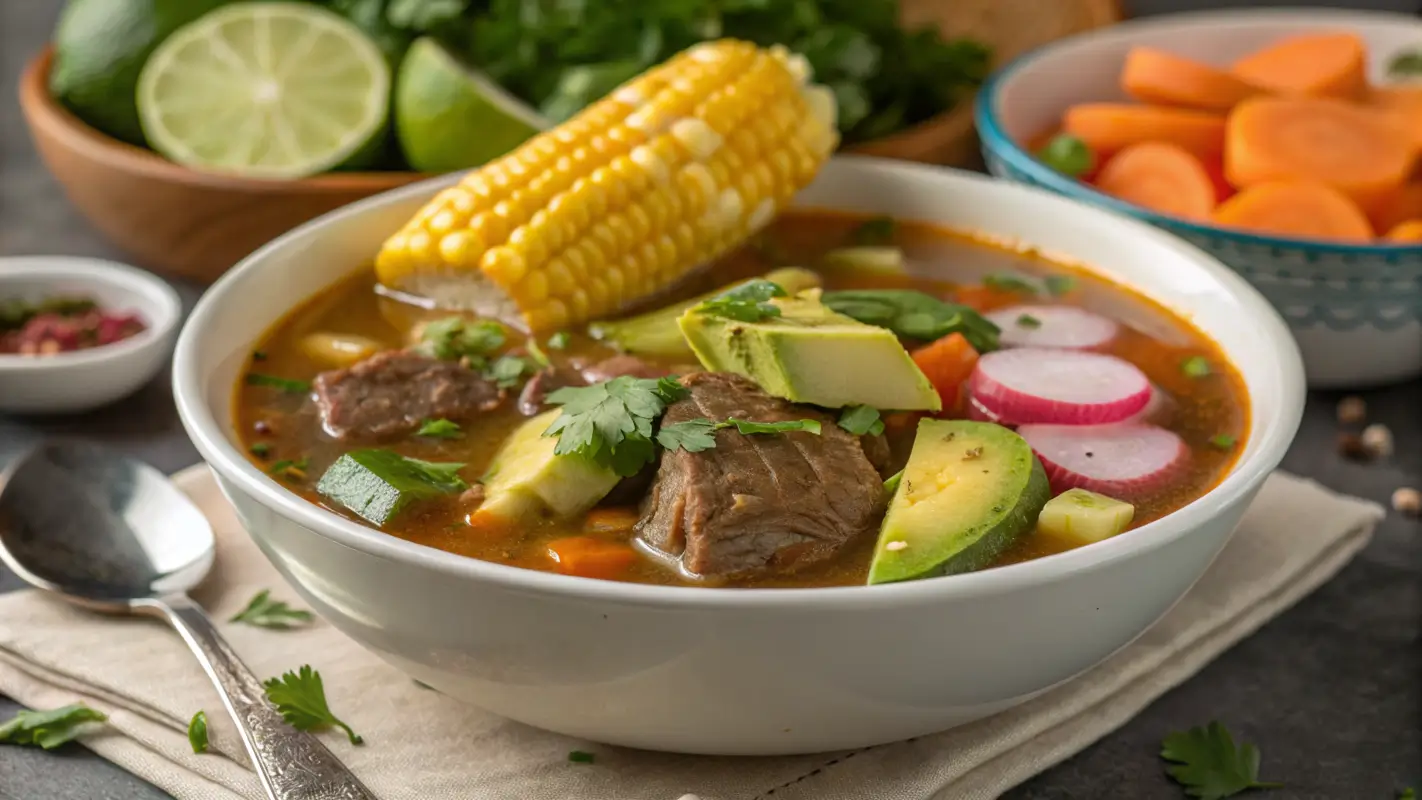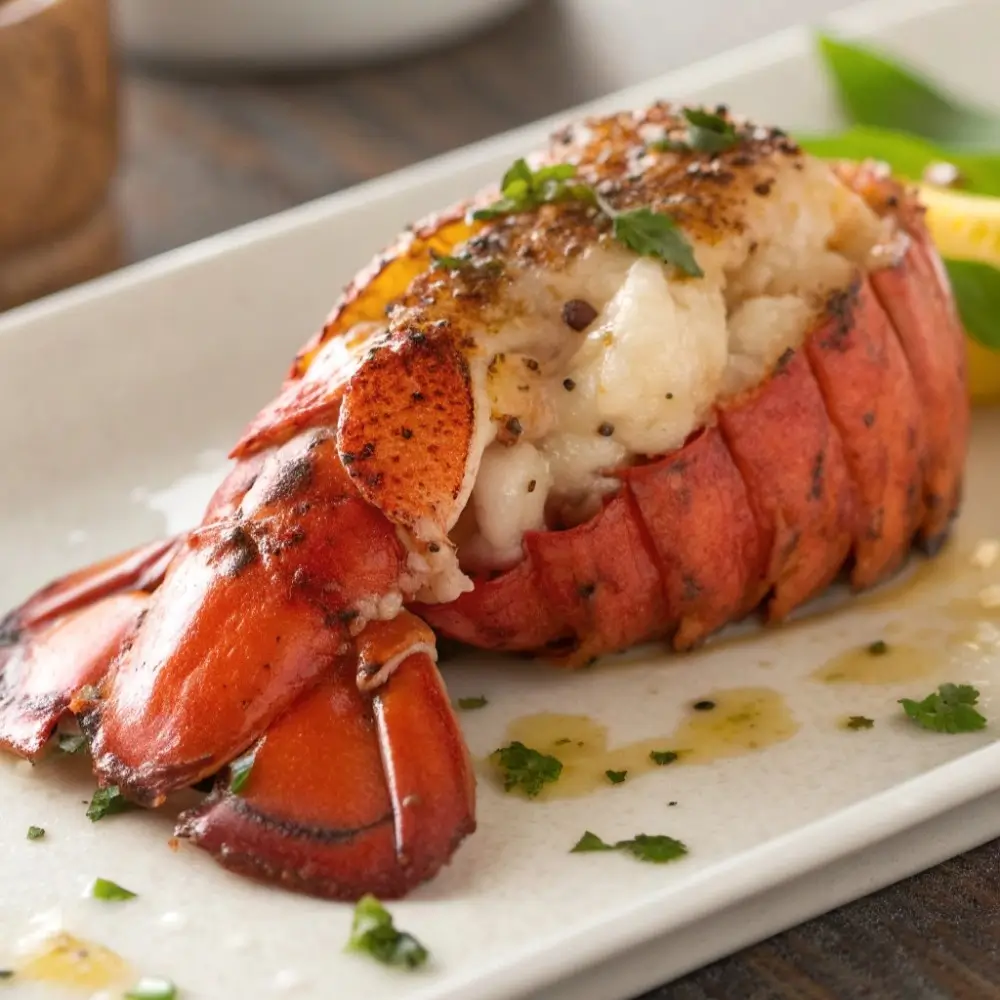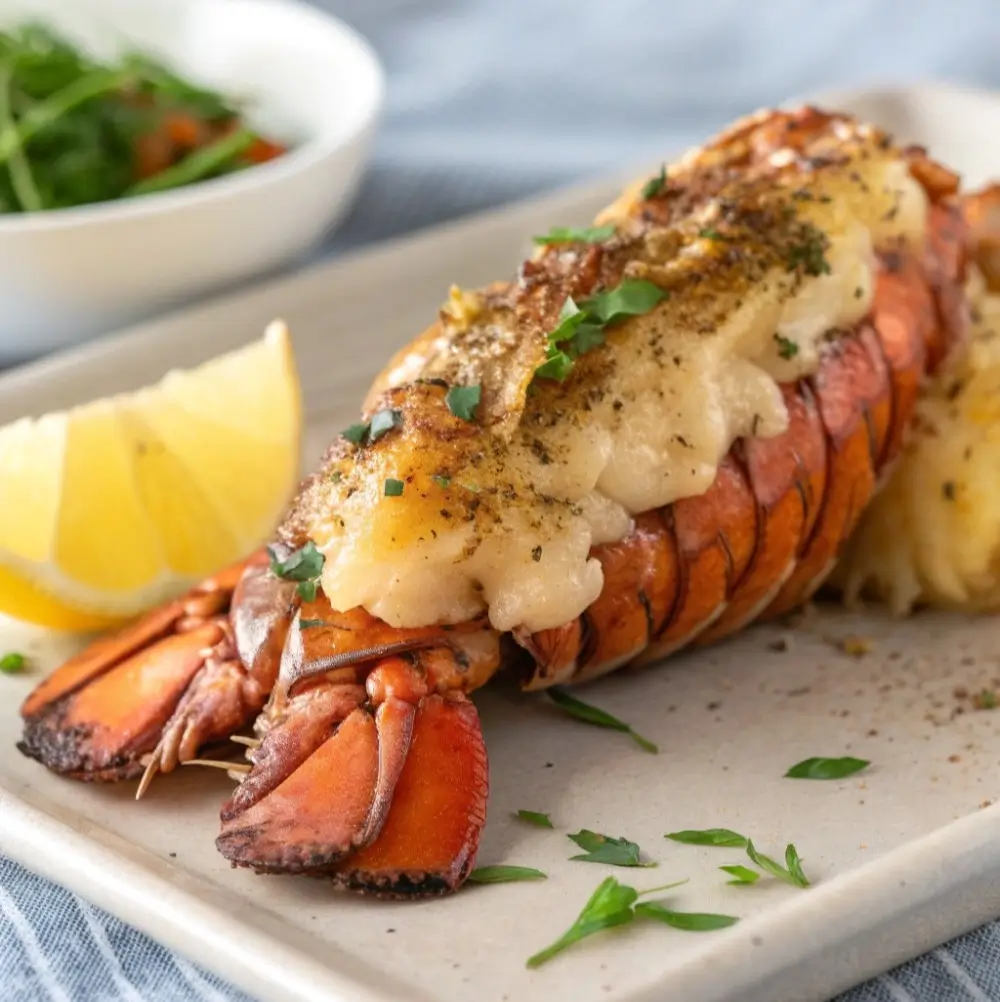Table of Contents
At the heart of Mexican cuisine lies Caldo de Res, serving as a celebration of culture, tradition, and the joy of hearty, nourishing food. This Mexican beef soup embodies the warmth of the Mexican kitchen, blending rich flavors, vibrant vegetables, and tender beef in a broth that’s both restorative and satisfying. This article explores Caldo de Res, delving into its ingredients, cooking techniques, and beloved variations across Mexico. Additionally, from its nutritional benefits to serving suggestions, we’ll cover everything you need to bring this traditional dish to your table, ensuring a memorable experience.
Introduction to Mexican Cuisine and Caldo de Res
Mexican cuisine, a tapestry of flavors, colors, and textures, is renowned worldwide for its depth and diversity. At the heart of this culinary tradition is Caldo de Res, a dish that stands as a testament to the simplicity and richness of Mexican cooking. This beef soup, simmered slowly to perfection, is more than just a meal; it’s a cultural heritage passed down through generations, a comforting embrace in a bowl.
Caldo de Res is not merely food; it’s a celebration. It brings families together, heals the weary soul, and delights the palate with its complex flavors. The dish’s history is as rich as its broth, originating from humble beginnings where every ingredient had a purpose, and nothing was wasted. The beef shank, with its bone marrow, lends the soup its unmistakable richness, while a medley of vegetables adds color, texture, and a bounty of nutrients.
Historical Significance
The roots of Caldo de Res stretch deep into Mexico’s past, where it was crafted by cooks who understood the land and its offerings. This soup reflects the essence of Mexican cuisine: the ability to create something extraordinary from simple, available ingredients. It’s a culinary tradition that speaks volumes about the Mexican spirit – resilient, vibrant, and endlessly creative.
Cultural Importance
In Mexico, Caldo de Res is more than just a dish; it’s a part of life’s rhythm. Served at family gatherings, special occasions, and on any day that calls for a bit of comfort, this soup embodies the warmth and generosity of Mexican hospitality. Each spoonful tells a story of shared meals, laughter, and the love that binds families and friends together.
In the world of Mexican cuisine, Caldo de Res shines as a beacon of tradition and taste. As we delve deeper into its ingredients and preparation, we invite you to join us on this culinary journey, exploring the flavors and stories that make this dish a beloved classic. So, grab your spoon, and let’s savor the richness of Mexican cooking together.
The Ingredients of Caldo de Res
Caldo de Res is a symphony of flavors, each ingredient playing a crucial role in creating a dish that’s as nourishing as it is delicious. Here’s a breakdown of the key ingredients and the nutritional benefits they bring to the table:
- Beef Shank: Rich in protein, iron, and zinc, it supports muscle growth, energy levels, and immune function.
- Carrots: Loaded with beta-carotene, essential for vision and skin health, they provide sweetness and crunch.
- Potatoes: Comforting in texture, they’re a great source of potassium for blood pressure regulation and fiber for digestion.
- Corn: Adds a touch of sweetness and provides B vitamins, crucial for energy production and brain health.
- Cabbage: A cruciferous vegetable that’s high in vitamins C and K, as well as fiber, supporting immune health and digestion.
- Zucchini: Low in calories but high in vitamins A and C, potassium, and antioxidants, zucchini contributes to overall health and well-being.
- Green Beans: Packed with vitamins A, C, and K, fiber, and folate, green beans support heart health and provide anti-inflammatory benefits.
- Cilantro: More than just a garnish, cilantro is rich in antioxidants, vitamins A, C, and K, and has detoxifying properties.
- Garlic: Known for its health benefits, garlic boosts the immune system, reduces blood pressure, and has antibacterial properties.
- Onions: A foundational ingredient in many dishes, onions are high in antioxidants and have been shown to promote heart health.
Selecting the Right Ingredients for Authentic Flavor
To ensure your Caldo de Res is as authentic and flavorful as possible, here are some tips for selecting the right ingredients:
- Choose a beef shank with a good balance of meat and bone; the marrow from the bone enriches the broth with flavor and nutrients.
- Opt for fresh, vibrant vegetables. Their firmness and color are indicators of freshness and nutritional content.
- Incorporate traditional herbs and spices, such as cilantro and garlic, to infuse the soup with the distinctive flavors of Mexican cuisine.
Remember, the quality of the ingredients directly influences the taste and nutritional value of the Caldo de Res. By selecting the best ingredients, you’re not just making a meal; you’re crafting an experience that celebrates the rich tapestry of Mexican culinary tradition.
For more information on the nutritional benefits of the key ingredients used in Caldo de Res, visit Healthline for an in-depth look at the health benefits of beef, and Medical News Today for a comprehensive overview of the benefits of carrots.
Cooking Techniques
Step-by-Step Cooking Guide to Make Caldo de Res
Creating a pot of Caldo de Res Recipe that sings with flavor and warmth involves more than just simmering beef and vegetables. It’s about layering flavors, understanding the cooking process, and adding each ingredient at the right time. Here’s a step-by-step guide to making your Caldo de Res a masterpiece:
- Preparing the Beef: Begin by seasoning the beef shank with salt and pepper. In a large pot, sear the beef on all sides until browned. This step is crucial for developing deep, rich flavors in the broth.
- Making the Broth: Once the beef is browned, add enough water to cover the meat. Bring to a boil, then reduce to a simmer. Skim off any foam that rises to the surface. This will ensure a clear, clean-tasting broth.
- Adding the Aromatics: Introduce onions, garlic, and cilantro early in the cooking process. These ingredients will infuse the broth with their flavors as the soup simmers.
- Vegetable Timing: Add the harder vegetables, like carrots and potatoes, early on, so they have enough time to soften. Add more delicate vegetables, such as zucchini and green beans, later in the cooking process to avoid overcooking them.
- Simmering to Perfection: Allow the soup to simmer gently for several hours. This slow cooking process is key to tenderizing the beef and melding the flavors of the various ingredients.
- Final Seasoning: Taste the broth towards the end of cooking and adjust the seasoning with salt and pepper as needed. A squeeze of lime juice can add a bright, finishing touch.
Tips for Enhancing Flavor
To elevate your Caldo de Res from good to unforgettable, consider these flavor-enhancing tips:
- Roast the Vegetables: Enhance flavor by lightly roasting onions, carrots, and potatoes before adding to the broth.
- Use Homemade Stock: Opt for homemade beef or chicken stock over water for a richer flavor.
- Incorporate Fresh Herbs: Add cilantro or parsley in the last minutes of cooking for a vibrant taste. Serve
- with Accompaniments: Offer diced onions, chopped cilantro, lime wedges, and spicy salsa for customizable bowls.
Cooking Caldo de Res is an act of love—a slow, simmering process that fills the home with mouthwatering aromas and culminates in a meal that’s both comforting and nourishing. By following these steps and tips, you’ll not only create a delicious dish but also partake in a rich culinary tradition that spans generations. So, let’s put on our aprons, gather our ingredients, and embark on the rewarding journey of making Caldo de Res.
Variations of Caldo de Res
Regional Variations Across Mexico
Caldo de Res showcases Mexican cuisine’s diversity with regional twists. Northern versions are heartier, featuring more beef and spice. Coastal variations often include lime or seafood for a zestier taste.
Central Mexico’s Caldo de Res boasts a broad mix of vegetables like chayote and plantains, enriching the flavor. In the south, local herbs and spices blend with indigenous culinary traditions, creating a uniquely complex and comforting soup.
Modern Twists on the Classic Recipe
While traditional Caldo de Res remains beloved, contemporary chefs and home cooks alike enjoy putting modern twists on the classic recipe. Some innovations include:
- Vegetarian and Vegan Versions: Use mushrooms or plant-based meats instead of beef for a veggie twist.
- Low-Carb and Paleo Variations: Swap starchy veggies with cauliflower or turnips for low-carb diets.
- International Flavors: Add coconut milk or curry spices for a global twist on Caldo de Res.
These variations not only highlight Caldo de Res’s adaptability but also its ability to unite people, regardless of dietary preferences or cultural backgrounds. Additionally, the dish’s essence—warmth, nourishment, and a sense of home—remains intact, even with ingredient changes.
Serving and Presentation
How to Serve Caldo de Res
The way Caldo de Res is served can elevate the dining experience, turning a simple meal into a feast for the senses. Traditionally, the soup is ladled into large bowls, with the broth shimmering and the vegetables and meat tender and inviting. Accompaniments are key to the Caldo de Res experience, allowing diners to customize their bowl to their liking. Offer sides of diced onions, chopped cilantro, lime wedges, and a variety of salsas ranging from mild to fiery. Warm tortillas or a crusty loaf of bread make the perfect companions, ideal for soaking up the rich, flavorful broth.
Presentation Tips for an Authentic Experience
Presentation plays a crucial role in making Caldo de Res a memorable meal. Consider these tips for an authentic and appealing presentation:
- Colorful Vegetables: Choose a variety of vegetables with different colors to make the dish visually appealing. The vibrant colors of the carrots, corn, and zucchini can turn each bowl into a work of art.
- Garnish with Fresh Herbs: A sprinkle of freshly chopped cilantro or parsley just before serving adds a pop of color and a burst of flavor.
- Serve Accompaniments Separately: Arrange the accompaniments in small bowls on the table, allowing guests to add them to their soup as they please. This not only adds to the interactive dining experience but also lets the natural beauty of the soup shine.
Serving Caldo de Res is about more than just taste; it’s about creating an experience that engages all the senses. The steam rising from the bowl, the aroma of simmered beef and vegetables, the vibrant colors, and the rich, layered flavors all come together to create a meal that’s as nourishing for the soul as it is for the body. So, gather your loved ones around the table and share the warmth and joy of this Beef shank soup.
Health Benefits of Caldo de Res
Nutritional Analysis of this Mexican beef soup
Caldo de Res isn’t just a feast for the senses; it’s a powerhouse of nutrition. This traditional Mexican beef soup combines various ingredients, each offering unique health benefits, making it both delicious and nourishing.
- Beef Shank: Rich in protein for muscle repair and growth, and iron for oxygen transport in the blood.
- Vegetables: The variety in Caldo de Res, such as carrots, potatoes, and zucchini, offers vitamins A and C, potassium, and fiber for eye health and digestion.
- Bone Broth: Simmered with beef bones, it’s packed with collagen and nutrients that promote joint health, skin elasticity, and may reduce inflammation.
Together, these ingredients create a balanced meal that can boost immunity, aid in recovery from illness, and provide sustained energy. It’s a testament to the wisdom of traditional cooking methods, which intuitively combined ingredients not just for flavor but for their health-promoting properties.
Benefits of Bone Broth
The bone broth that forms the base of Caldo de Res deserves special mention for its health benefits. Rich in minerals like calcium, magnesium, and phosphorus, bone broth supports bone health and digestion. It’s also a source of gelatin, which can help maintain healthy joints, and amino acids like glycine, which has calming effects and can improve sleep quality.
FAQs About Caldo de Res
What are the best cuts of beef for the soup?
The beef shank is traditionally used for Caldo de Res because of its rich flavor and the marrow in the bones, which enriches the broth. Other cuts with bone-in, like short ribs, can also be used for a similar effect.
How can I store and reheat leftovers?
Caldo de Res can be stored in an airtight container in the refrigerator for up to 3-4 days. To reheat, simply warm it over medium heat on the stove until heated through. The flavors often deepen, making leftovers even more delicious.
Can I make Caldo de Res in a slow cooker?
Absolutely! A slow cooker is ideal for simmering Caldo de Res, allowing the flavors to meld beautifully over time. Add the beef, vegetables, and broth to the slow cooker. Cook on low for 6-8 hours or on high for 3-4 hours.
Is Caldo de Res gluten-free?
Yes, it is naturally gluten-free, as it mainly consists of beef, vegetables, and broth. However, check the ingredients of store-bought broth for gluten.
Caldo de Res isn’t just a Mexican dish; rather, it celebrates culture, family, and the healing power of food. Whether you’re enjoying it on a cold day or sharing it with loved ones, this soup brings a taste of home and numerous health benefits. So, the next time you’re craving comfort food, remember Caldo de Res—it warms the heart and nourishes the body.






Where are the recipes…I am only getting an ingredients list..and no actual recipe!!